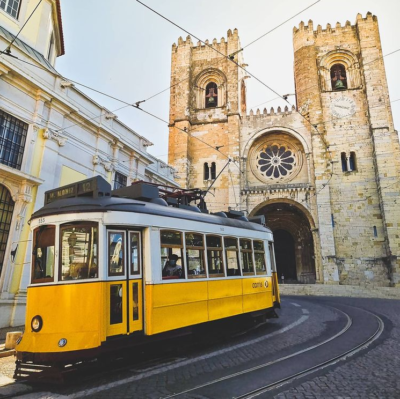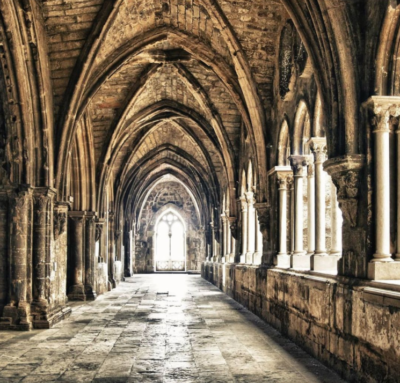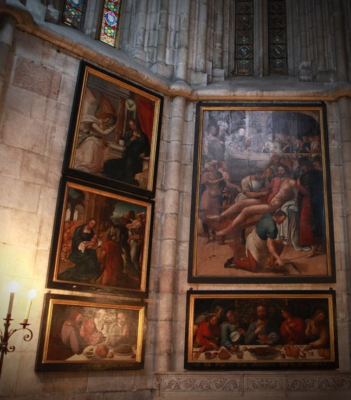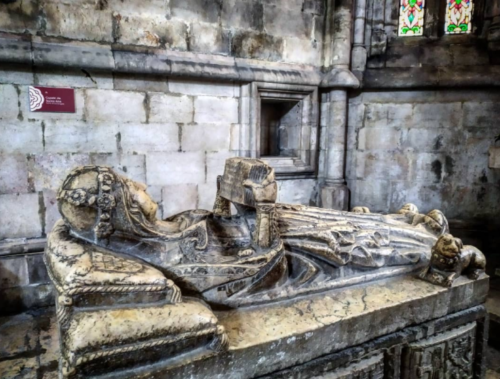Sé de Lisboa
There is no way of visiting a European capital & fail to notice its Cathedral, in this case, the Sé de Lisboa. These emblematic buildings are not just noticeable of course. European Cathedrals manage to concentrate a great part of the resounding history of each of these cities under one roof. Lisbon’s Sé Cathedral could not be an exception. One of the oldest buildings in the city and the oldest surviving church of all in Lisbon was built right after the reconquest of Lisbon by the Christians in 1147.
That first Cathedral of Santa Maria Maior de Lisboa would take the place of the Great Mosque that stood in its place during the period of Islamic rule. Since the first Romanesque building that would be completed in the first half of the 13th century several changes, additions & restorations have taken place but its austere Romanesque character has remained unaltered.
Of course, the biggest changes and most prevailing features today follow the Gothic style, introduced at the end of the 13th century. The highlights of the ensemble include the Capela de Bartolomeu Joanes, the Camarim do Patriarca, the Capela-Mor and the Capela do Santíssimo Sacramento.



Built in the reign of D. Afonso Henriques, after taking Lisbon from the Moors, the construction of the Cathedral of Lisbon began in 1147 and is therefore considered the oldest church of the current Portuguese capital. The reorganization of the Diocese of Lisbon began shortly after the conquest of the city by the first king of Portugal and the knights of the Second Crusade.
An English crusader, Gilberto de Hastings, was then appointed Bishop, and the construction of this Cathedral began on the site of the old mosque, works that ended in the first decades of the 13th century. The original building, in Romanesque style – with a Latin cross plan with three naves, triforium over the side naves, protruding transept, and tripartite apse – was designed by Mestre Roberto and has many similarities with the Old Cathedral of Coimbra, built a few years before.



But it has undergone many interventions over the centuries: some due to the needs and fashions of each era, others due to the countless cataclysms that affected Lisbon. The Gothic cloister, for example, began to be built in the reign of D. Dinis (between 1261 and 1325), having the particularity of being the only one placed at the back of the building.
The apse with deambulatory was built in the reign of D. Afonso IV (between 1325 and 1357), to receive pilgrims who came to venerate the relics of St. Vincent and to create his pantheon, and constitutes the only deambulatory in a national Gothic cathedral, works that ended only during the reign of D. João I (between 1357 and 1433). Two centuries later, in 1649, a new sacristy was added in the Mannerist style.
With the great Lisbon earthquake, in1755, part of the building was destroyed. The Gothic chancel, the chapel of the Most Holy, the roof of the nave, the south tower of the facade, and the lantern tower collapsed. Between 1761 and 1785, the Chapel of the Most Holy was rebuilt. The south tower, the nave’s roof, and the new chancel were built between 1769 and 1771 by the architect Reinaldo dos Santos.
In the early 20th century, the Lisbon Cathedral was also subjected to revivalist restorations, which removed several additions from the Baroque period. Augusto Fuschini and António do Couto Abreu then planned a temple based on the existing medieval structures. Foschini rebuilt vaults, restored and opened new windows, and surmounted the building with battlements. With António do Couto Abreu, the dome of the central nave was rebuilt, the facade was restored and the rosacea redone, in addition to other alterations that gave the building the Neo-Romanesque appearance it shows today.


Classified as a National Monument since 1910, it was reopened with all solemnity in 1940, during the period of Estado Novo. Seven years later, it held the celebrations of the eighth centenary of Lisbon’s conquest from the Moors and the third centenary of its Independence. It is presently one of the ex-libris of the city and one of the most significant monuments in the country: a place of enormous historical, architectural, religious, and spiritual value that is worth visiting, a place where Faith and History come together. More

